Lviv, or Lemberg as we call it in German, has been on my radar since I was a kid. I overheard elderly people talking about Austrian soldiers being in sent to Galicia as a punishment. Soldiers of the Austrian-Hungarian monarchy. I listened to stories of people wading in ankle-deep mud, a place at the end of the word, void of any signs of civilization. That got me interested.
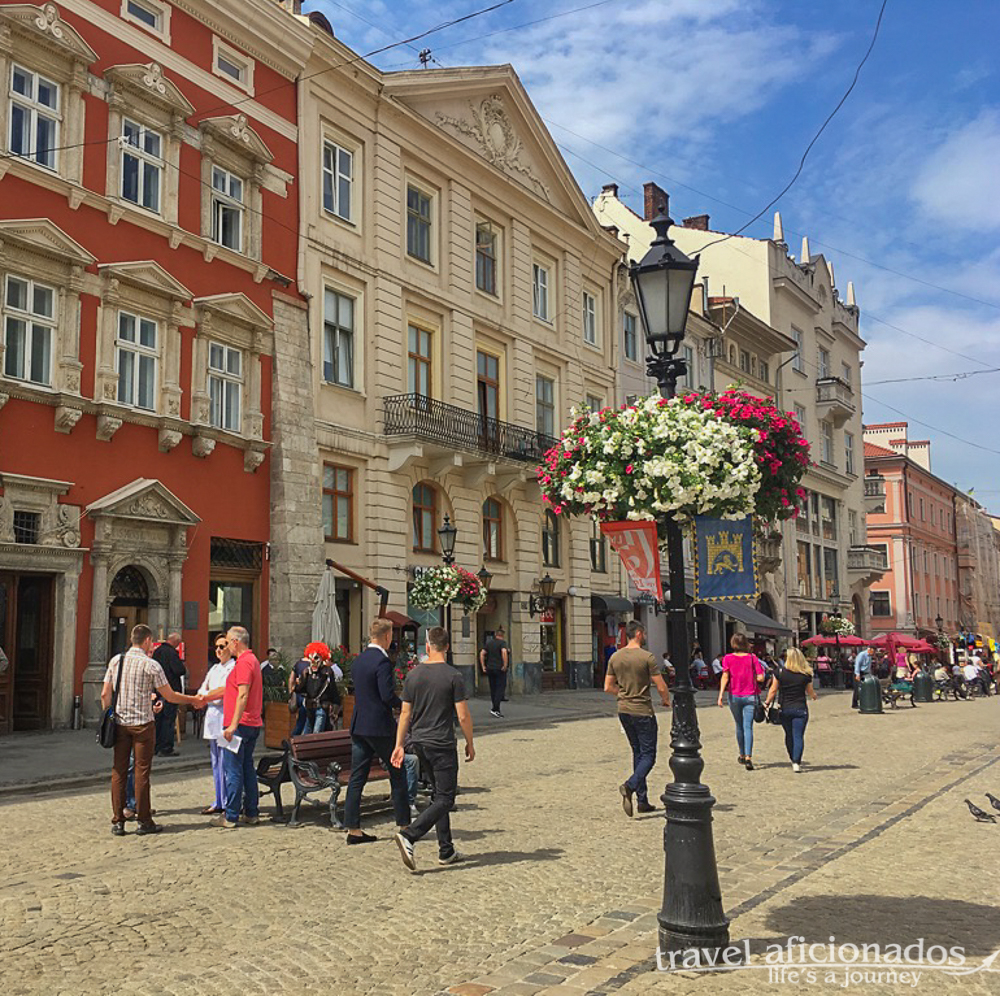
Rynok Square surrounded by 44 pretty colorful houses of different styles and periods.
Centuries later I finally strolled these streets and found none of this. Instead I discovered features unmistakably typical for a city ruled by the Habsburg Emperors: Cobbled-stone streets, a splendid opera house, baroque churches and cafes loaded with delicious pastry. On my first stroll I even ran into more a recent Austrian export, a cardboard version of Arnold Schwarzenegger, promoting a fitness center.
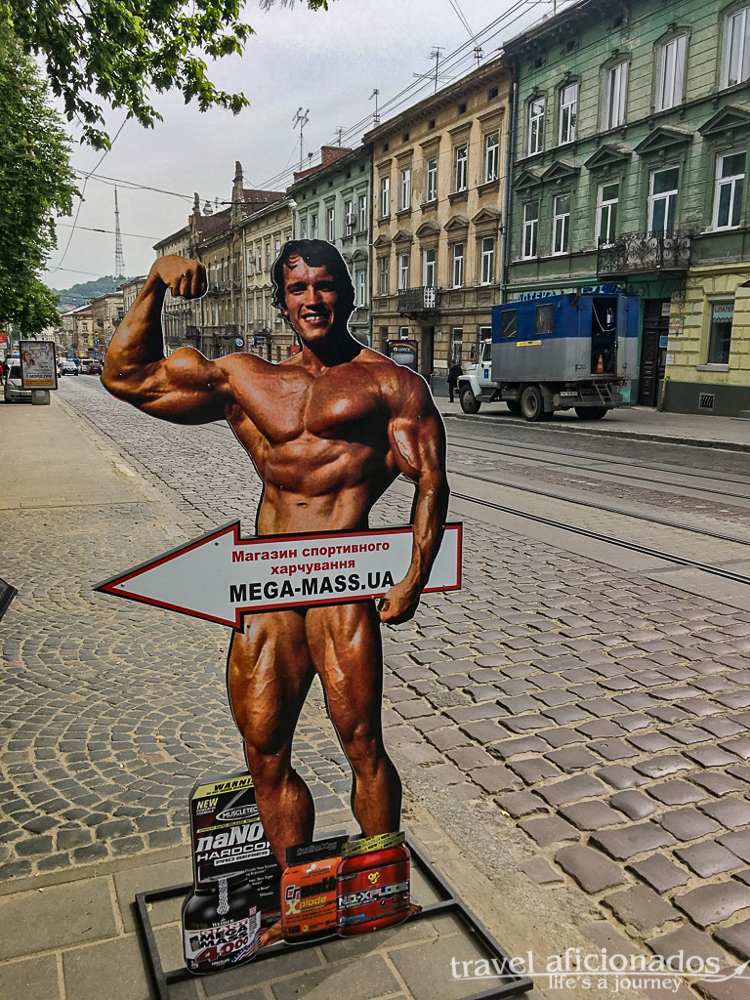
Cardboard version of Arnold, promoten a fitness center
The relatively small historic center of Lviv is a bit of an open-air museum, packed with tourists, especially from nearby Poland. The number of museums and churches is grotesquely high, and I tried not to overdose by limiting my visits to just a few.
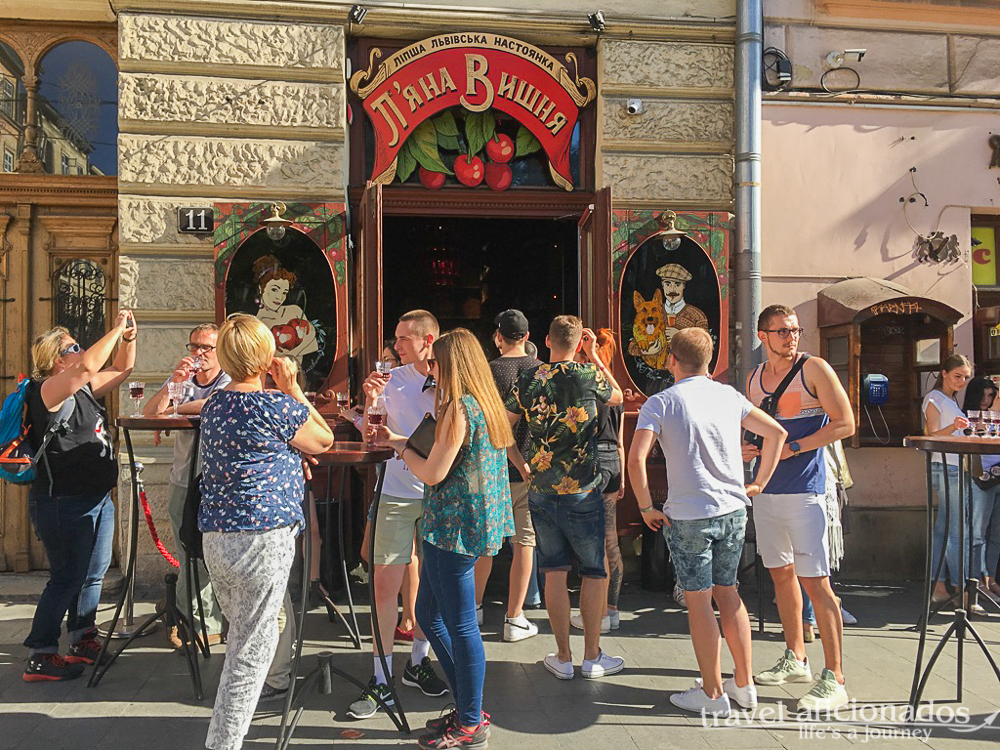
Polish tourists enjoying local cherry schnaps
I travelled with my friend Claudia over an extended weekend in May 2019, which is just enough to cover the basics of the very city. Our hotel was a 20-minute walk from the city center, just perfect. Away from the crowds, we got to explore the residential areas, traveled by streetcar and learned that Lviv has many faces. The splendor of its historical centers can be in stark contrast to crumbling houses and old ladies making a living by sitting on sidewalks selling flowers and vegetables from their garden.
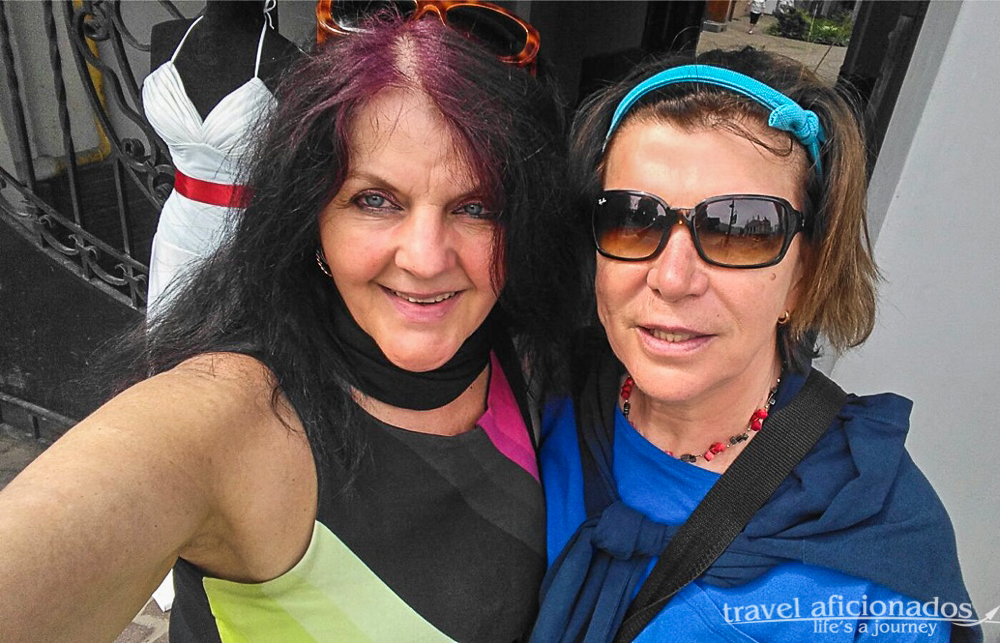
Best travel compagnions ever
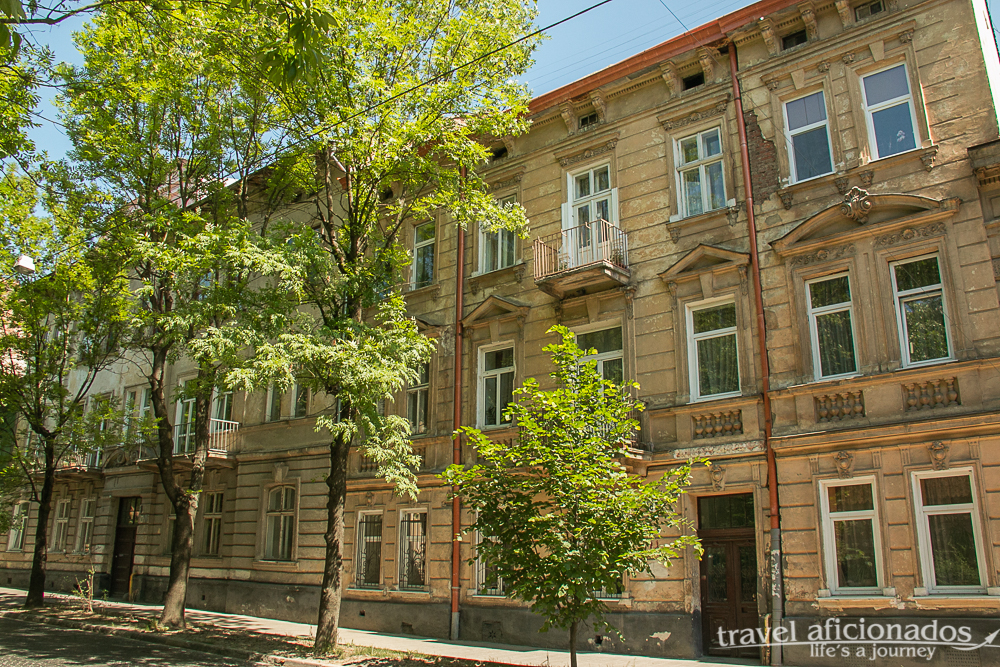
Lviv residential area when walking towards the center
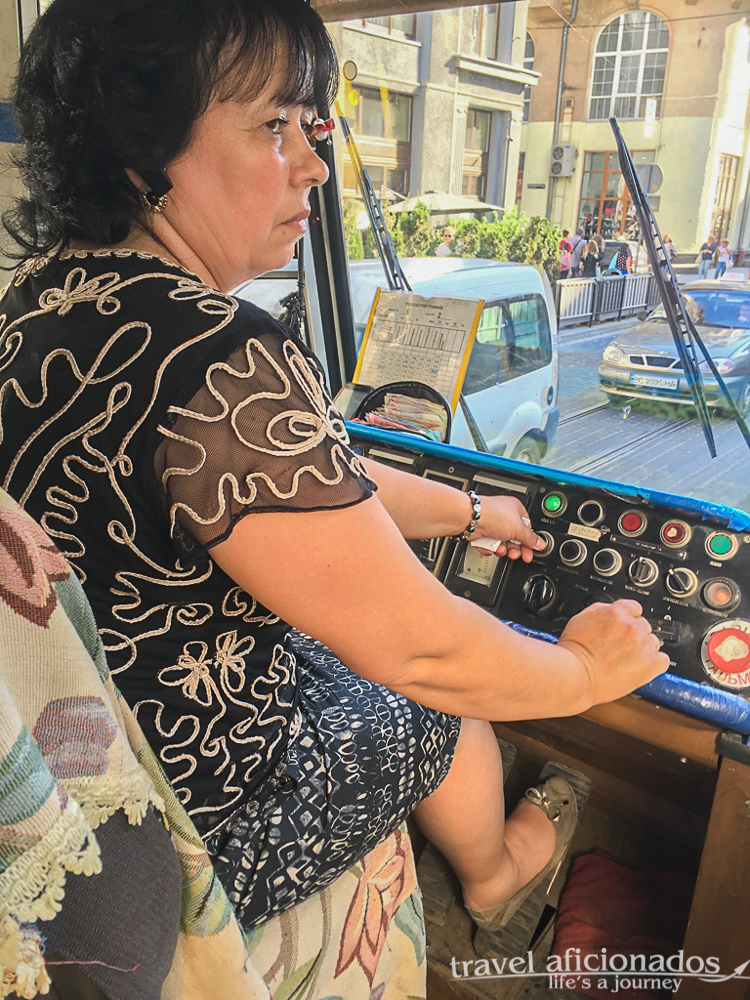
Riding the street car towards the center
Our first stop was the pedestrian zone and park in the middle of Svobody Avenue. It is lined with market stalls selling everything from Ukrainian headdresses, weapon-shaped chocolates, honey, local food and all kinds of alcoholic drinks.

Market on pedestrian zone of Svobody Avenue
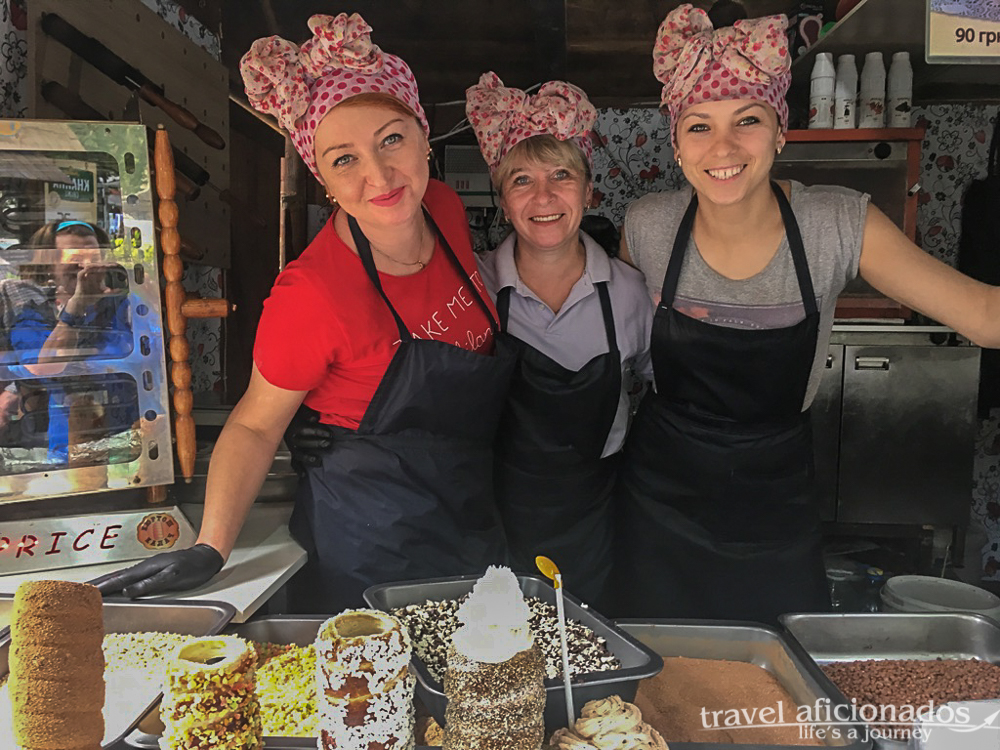
Market vendors on Svobody Avenue
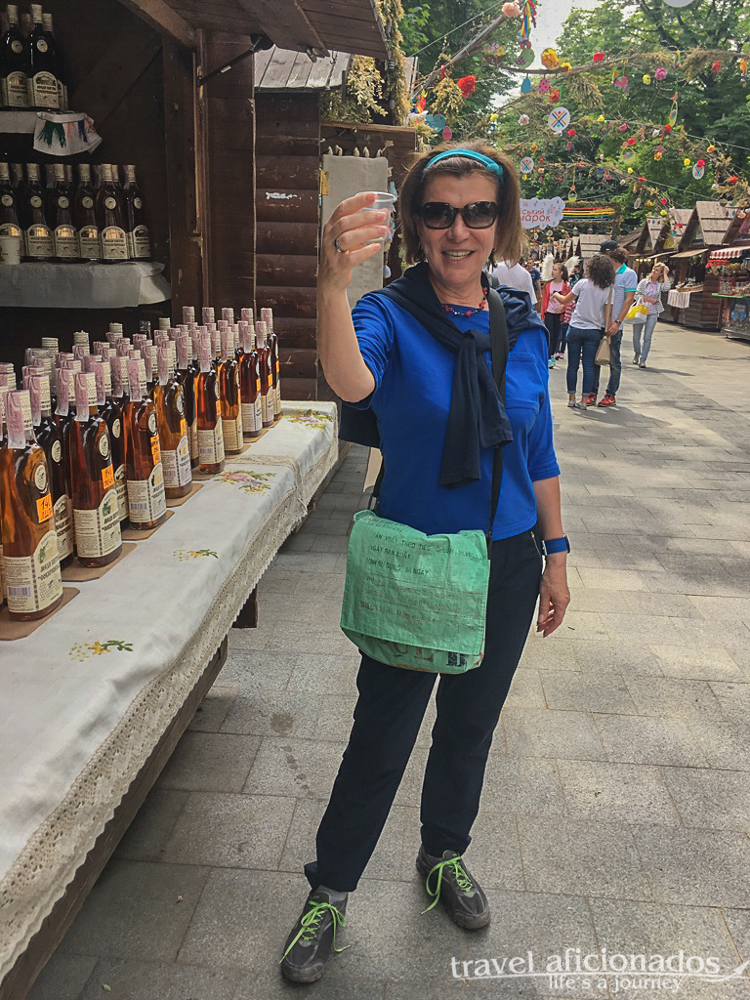
Market on Svobody Avenue
The pedestrian walk leads from the market straight to the large fountain in front of Lviv‘s splendid Opera House. It is often compared with the Vienna State Opera for its grandeur. Being built in 1900 as the project of Polish architect Zygmunt Gorgolewski, the building holds a lot of secrets inside. One of the legends says that the architect attempted suicide the following year, because he had realized that the underground waters of the river Plotva were washing away the foundation of the theatre. Despite that, the Lviv Theatre of Opera and Ballet is still functioning, unfortunately we did not try to get tickets for a performance
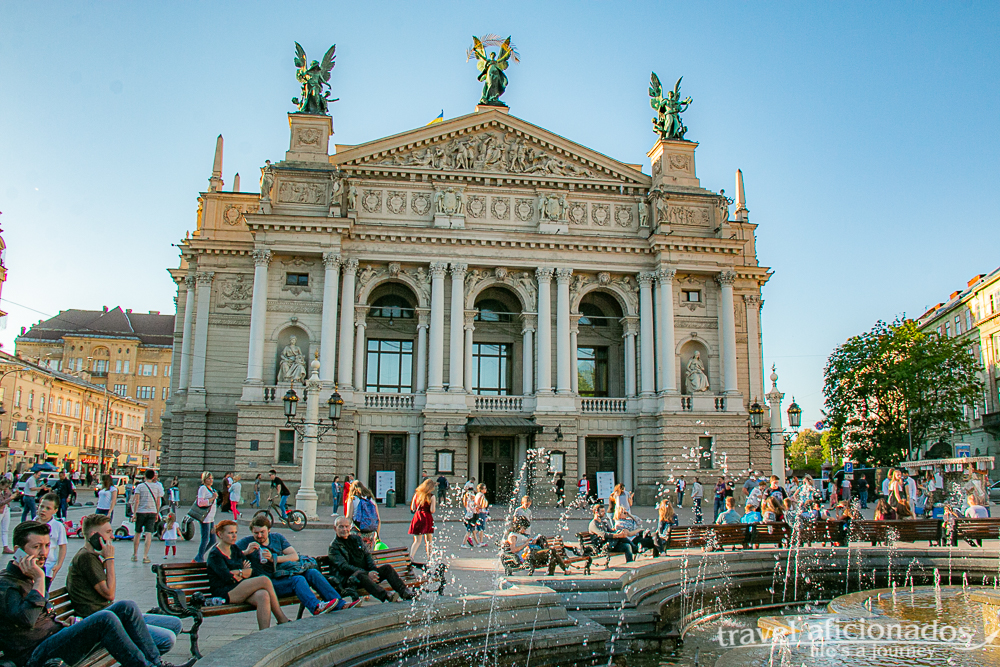
Lviv Opera House
The area is perfect for people watching, on the benches near the fountain people enjoy the delicacies they bought at the nearby market and children try to catch the drops of water spraying high up.
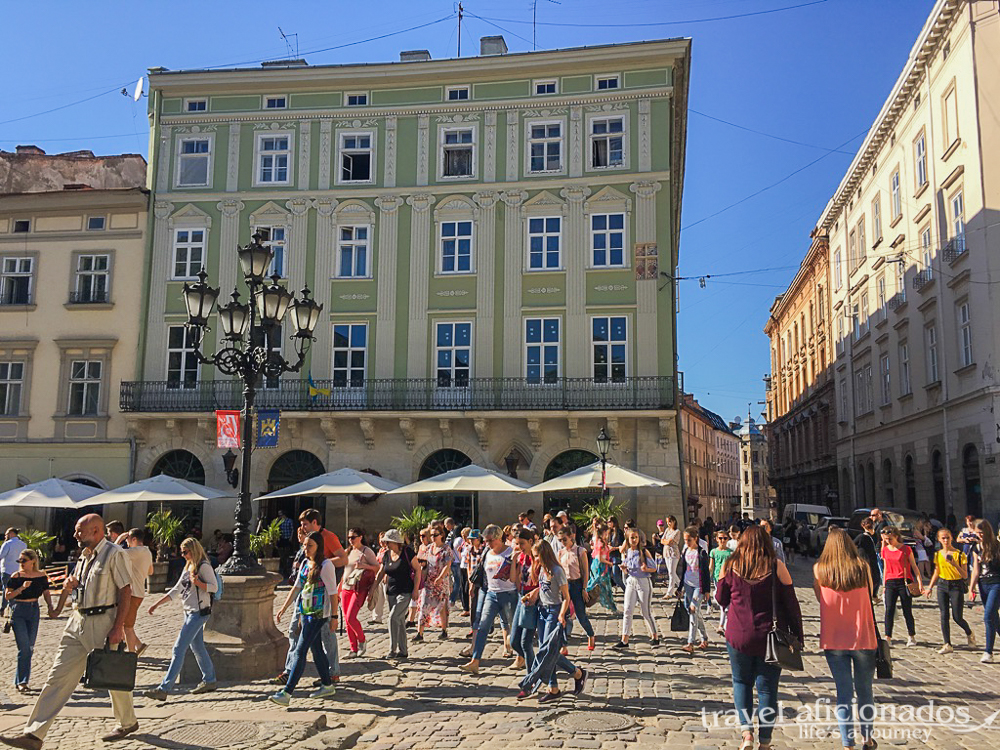
Rynok Square- the history heart of Lviv
The very heart of the historic centers is 13th century Rynok Square surrounded by 44 pretty colorful houses of different styles and periods. Most dominant is the super high (65m) Town Hall, constructed in the 14th century.
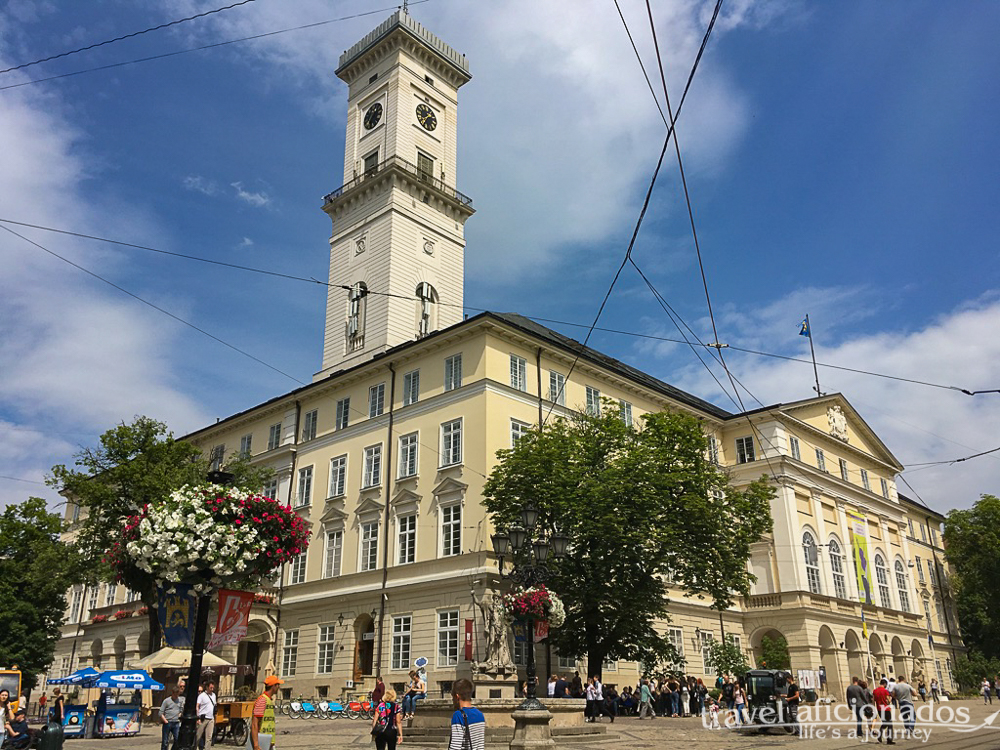
Lviv Town Hall on Rynok Square
We did not go inside Lviv’s Arsenal but circled this large building, which has unique little restaurants perched on its walls.
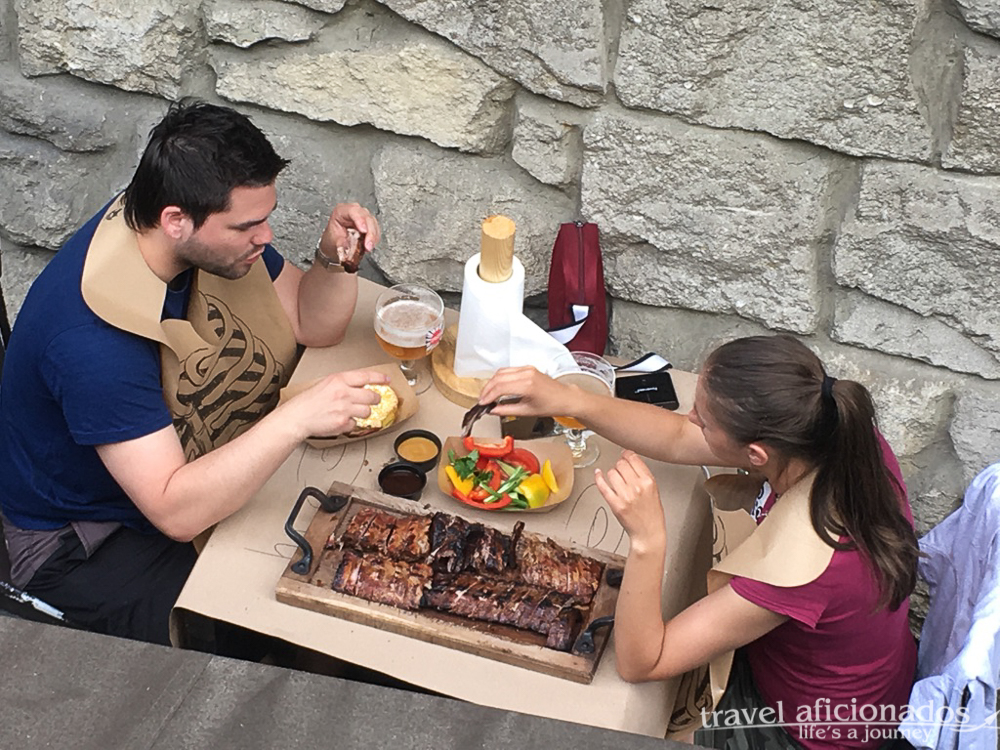
Restaurant perched along the walls of Lviv’s former arsenal
We stayed away from restaurants but checked out as many cafes we possibly could. Habsburg rule and tradition has left its traces, so side- walks café are as frequent as in Vienna’s historical center. Our favorite area was tiny Armenian Street, at its dead end a white ladder reaches into the sky and the small shop sell embroideries of all kinds.
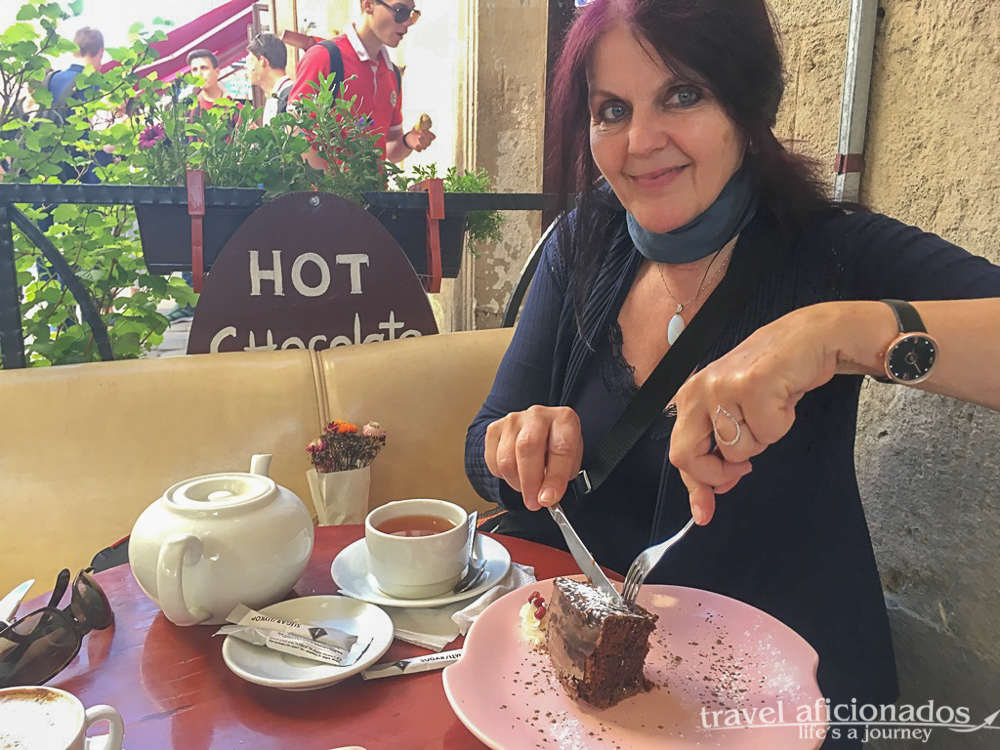
Café hopping in Lviv
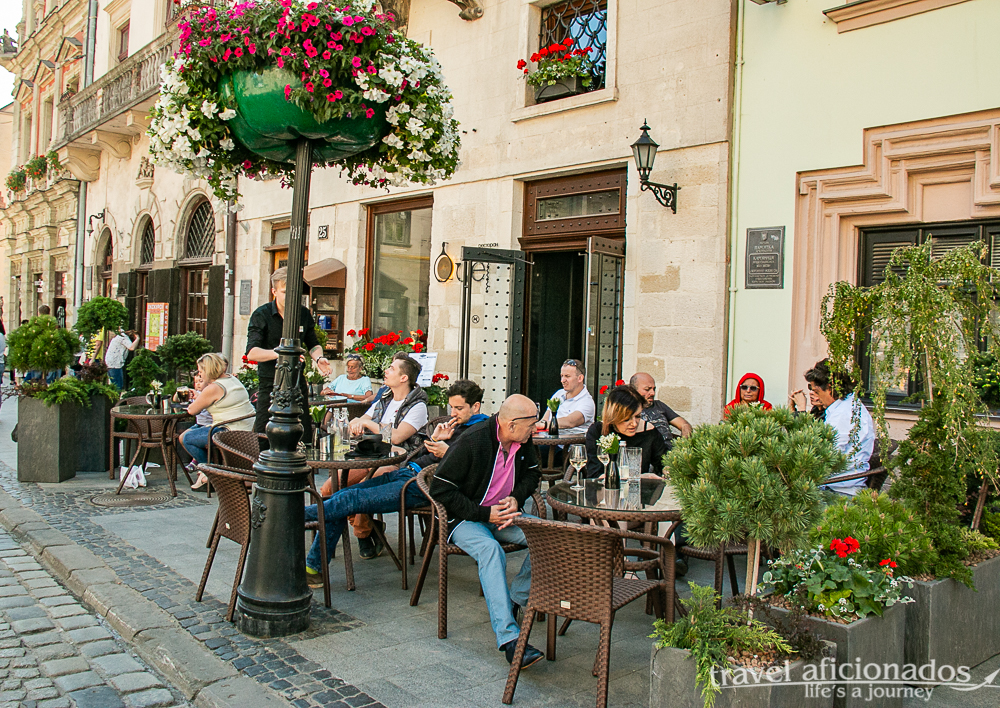
Lviv cafe scene
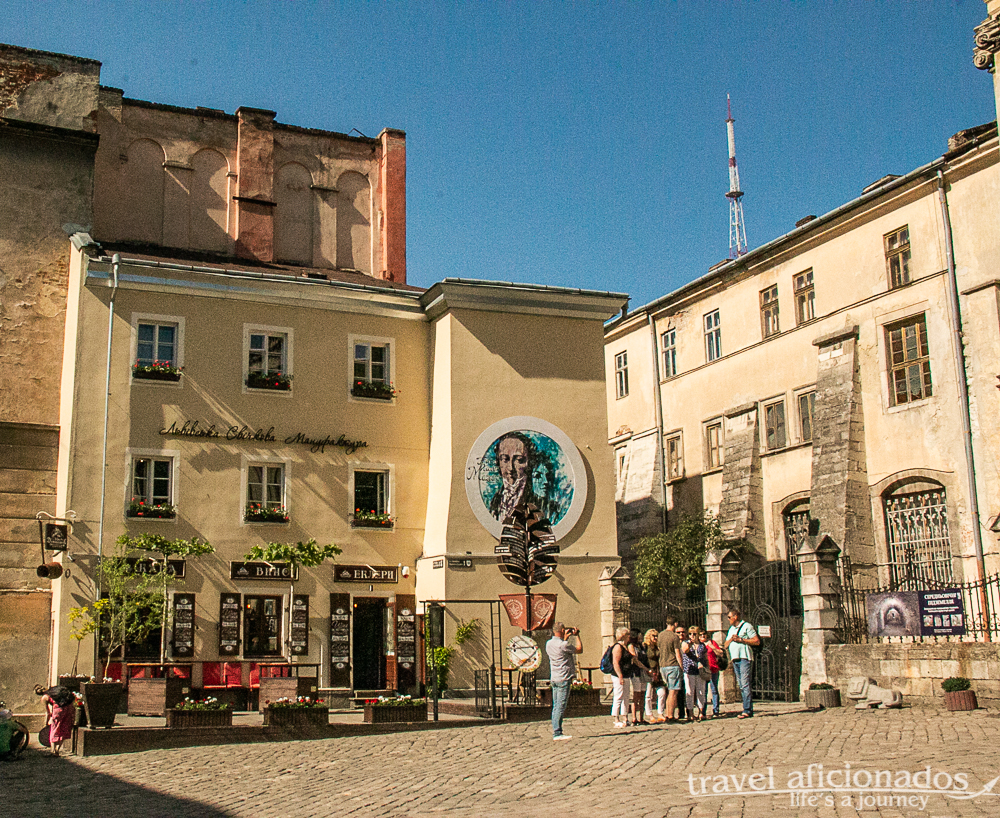
Lviv center
Lychakiv cemetery – where Ukraine’s elite is resting
I never miss a special cemetery no matter where I go. Lychakiv Cemetery was no exception. The 100-acre cemetery is not only a burial site but also a popular architectural monument and cultural preserve. There are more than 400,000 graves that date back to the end of the 18th century. The most renowned people of Ukraine are buried there, poets, politicians, intellectuals and the elite of Lviv. I read about tours during night-time, unfortunately we did not have the time to join this one.
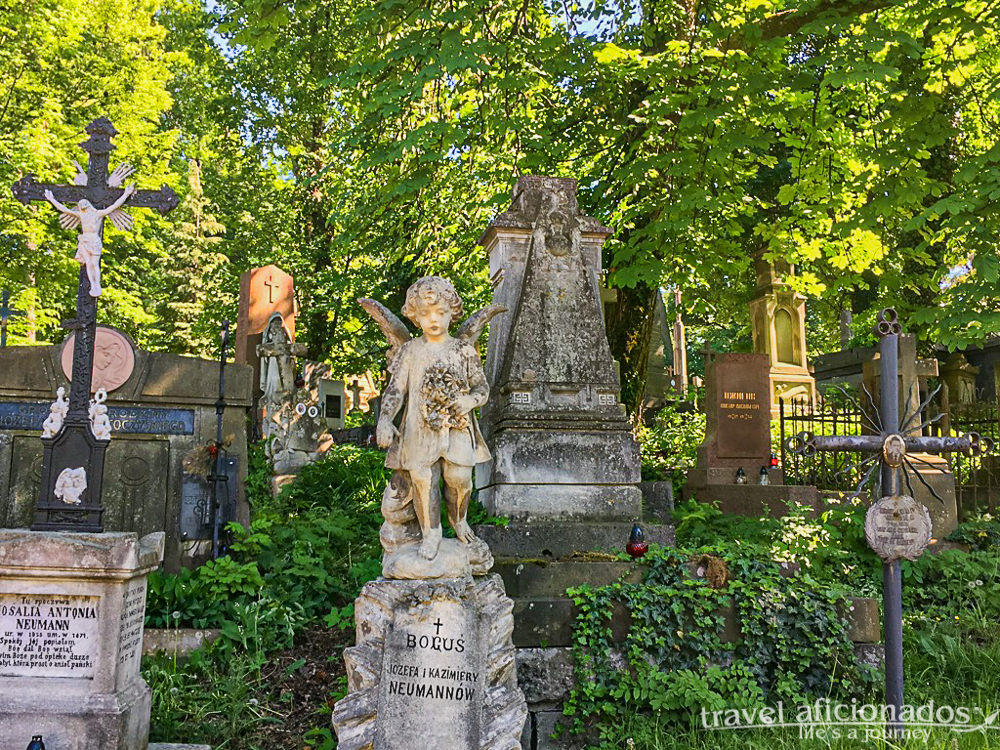
Lychakiv Cemetery – 400.000 tombs to be explored
We did not get a tour nor map and simply drifted along the various paths that weave through the forested cemetery. The place is huge, so before overdosing from reading tombstones in Ukrainian, Polish, Russian, English and German, we took rests underneath the many trees and digested what we had learned. To get there is easy a street car takes you right there.
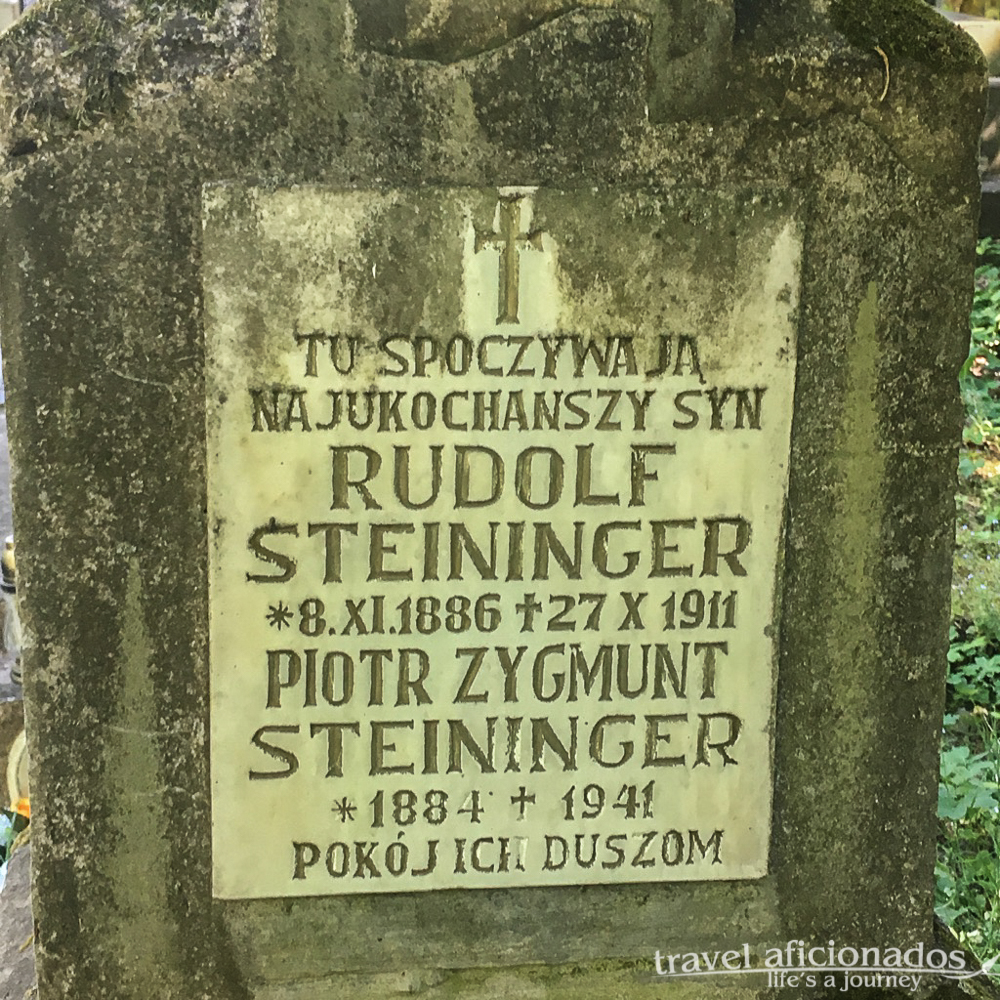
Lychakiv Cemetery show how multicultural Lviv was
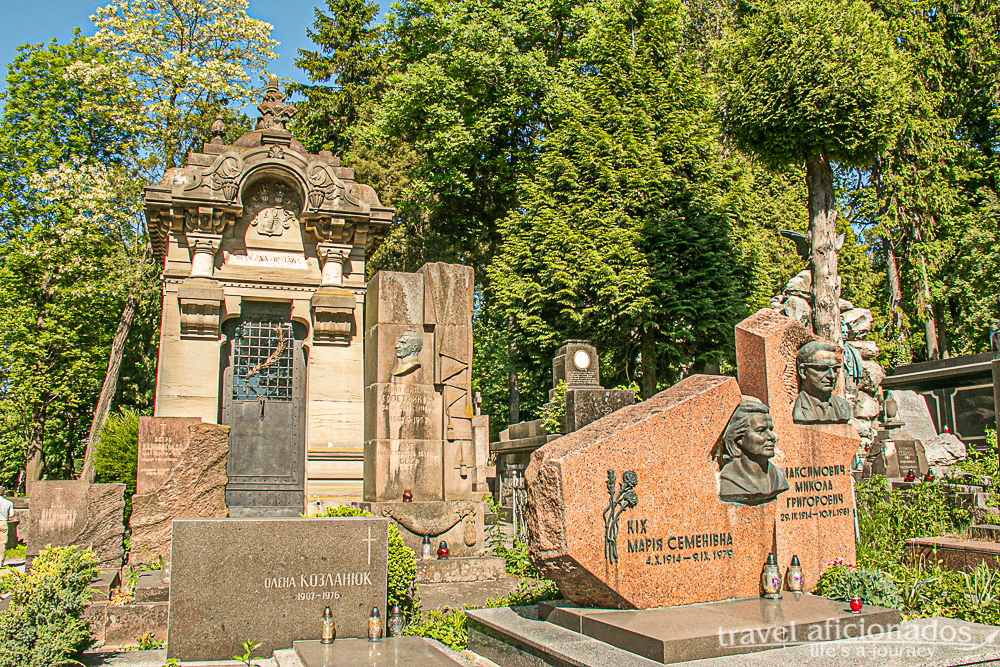
Lychakiv Cemetery were Ukraine’s elite is buried
Dominican Church – Baroque as you can
Being from Vienna such churches are nothing novel to me, but here it was the history The most striking feature of the cathedral is its Latin inscription on the façade: Soli Deo Honor et Gloria (To the One God, Honor and Glory). During Soviet Times, the church served as a warehouse of building materials, then it transformed into a Museum of Atheism. But with the independence of Ukraine, the museum was renamed into the Museum of the History of Religion.
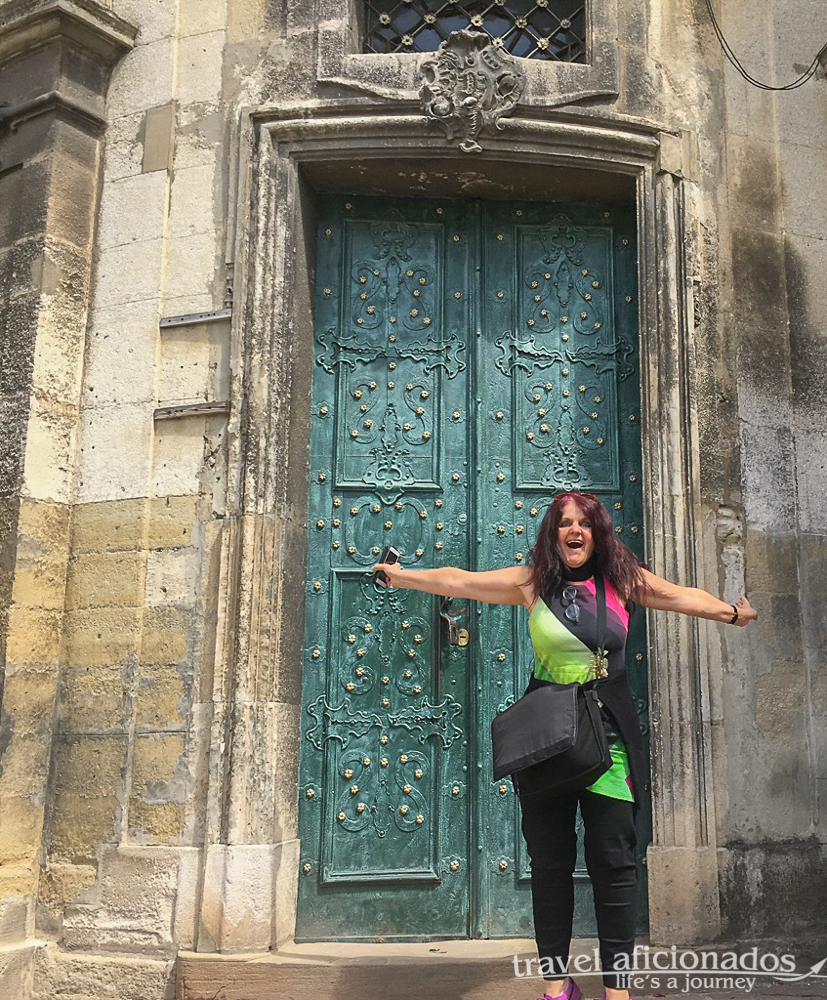
Claudia in front of Dominican Church
St. George’s Cathedral
This yellow baroque-rococo cathedral caught our eye from the roof-top restaurant of our hotel. Built 1744-1760 it sits on a hill overlooking the city. It was quite busy when we were there, lots of families had their babies baptized there which was quite interesting to watch. Super religious elderly women prey kneeing in front of stone-cold statue. Quite a different world
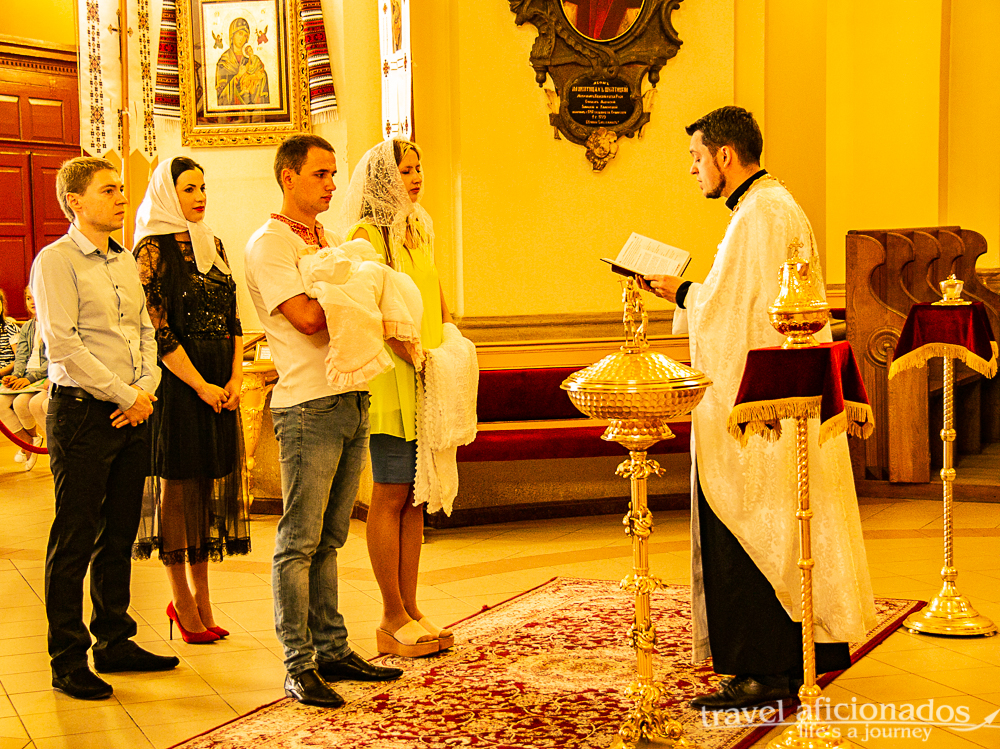
St. George’s Cathedral baptism
Lviv’s Golden Rose Synagogue
Lviv had a large and vibrant Jewish community before World War II, about one-third of the city’s population were Jews, more than 200,000. The Holocaust completely wiped out this community – only around 800 survived. Another one of my travelling rules is to visit the (former) Jewish quarter of whatever town I visit. Lviv was no exception. We even got a guide to explain the history of the Lemberg Jews and the tragic story of the Golden Rose Synagogue, of which only an outer wall remains.
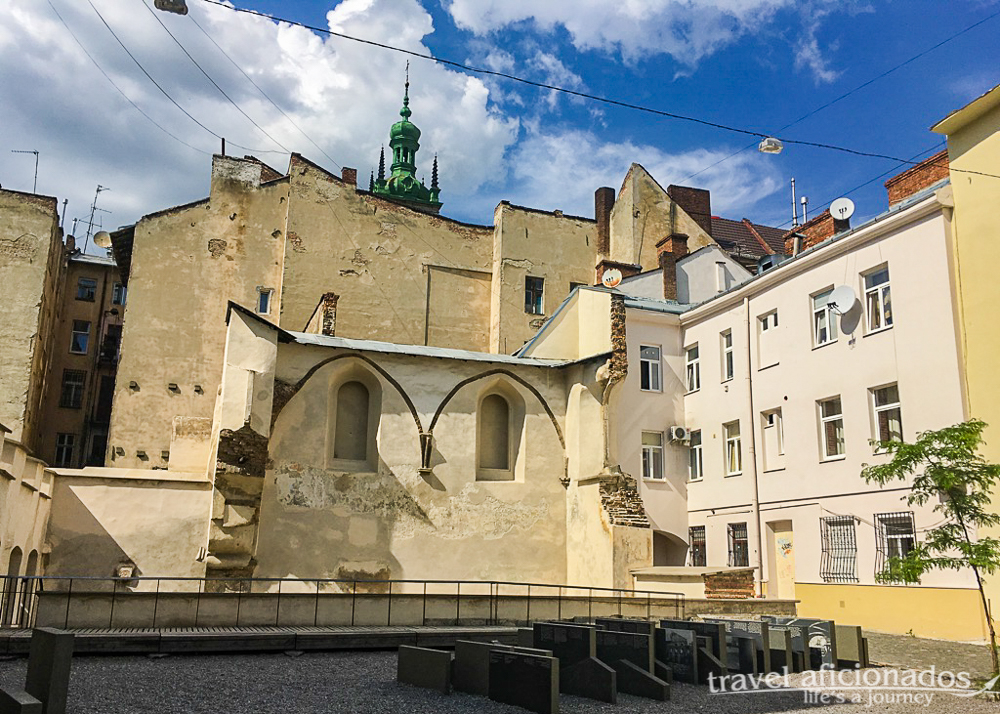
Golden Rose Synagogue – only back wall is left standing
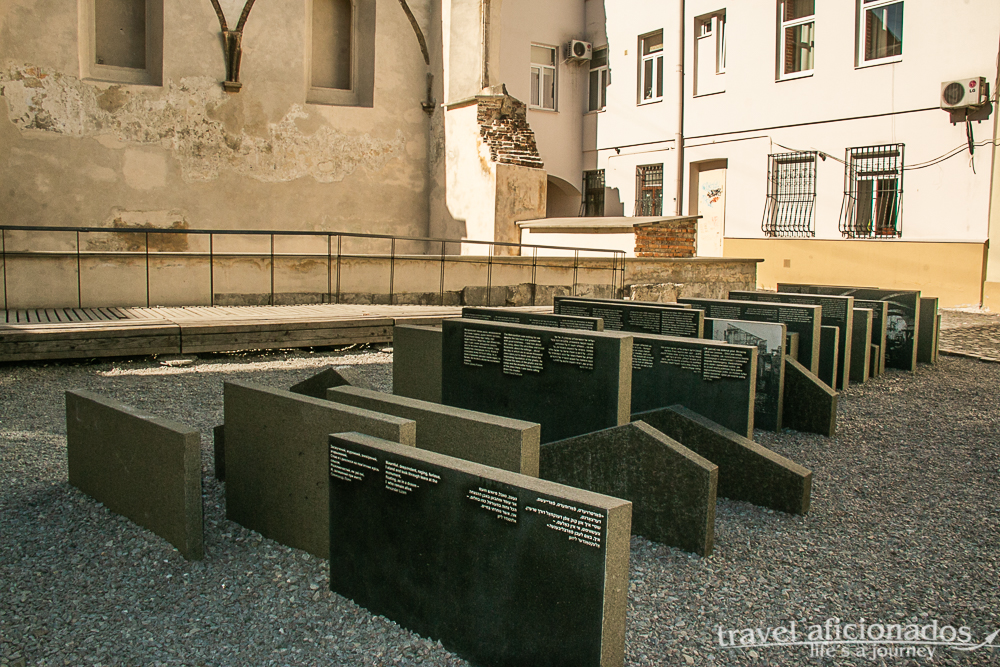
Site of the former synagogue, destroyed 1941 by the NAZIs
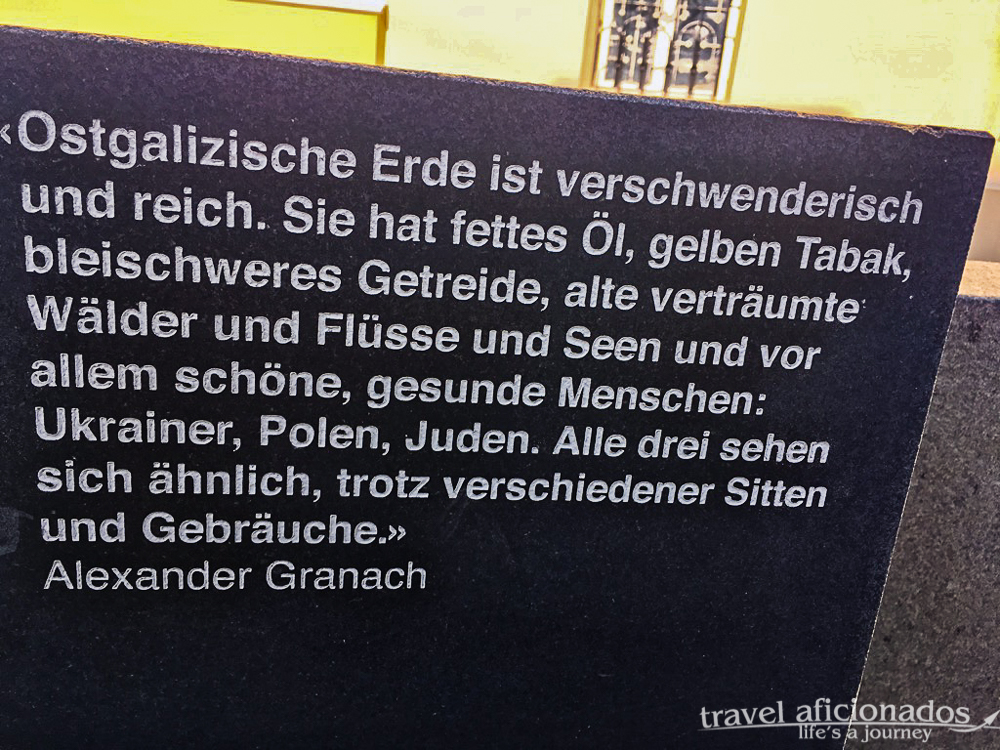
A midtown plot of land was bought in 1580, and the synagogue was founded and funded in 1581 by Yitzhak ben Nachman a very wealthy citizen. Since the plot used to belong to the Jesuits, they confiscated the building in1609. Only a ransom of 20,600 guilders returned the synagogue to the Jewish community. A local legend credits Rosa bat Ya’akov, Yitzhak’s daughter-in-law, for this success. The synagogue was therefore also called the Golden Rose Synagogue after her. In 1941, the synagogue was desecrated, and in 1942 destroyed by the Nazis. For a long time, the plot was neglected, some Jews demanded the synagogue to be rebuilt. But it was not, today a series of panels made of stone give testimony of the rich Jewish heritage that once was part of this town.
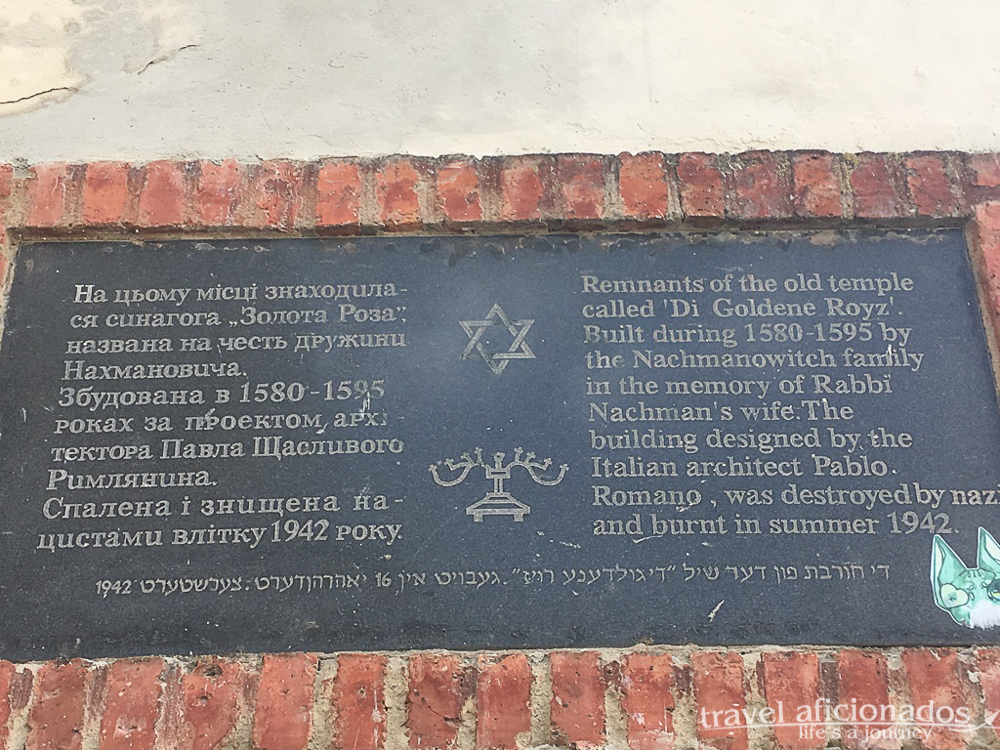
Plague on a building next to the synagogue
Near the synagogue is a very small museum that display items that remind of the Jewish quarter hat once thrived there.
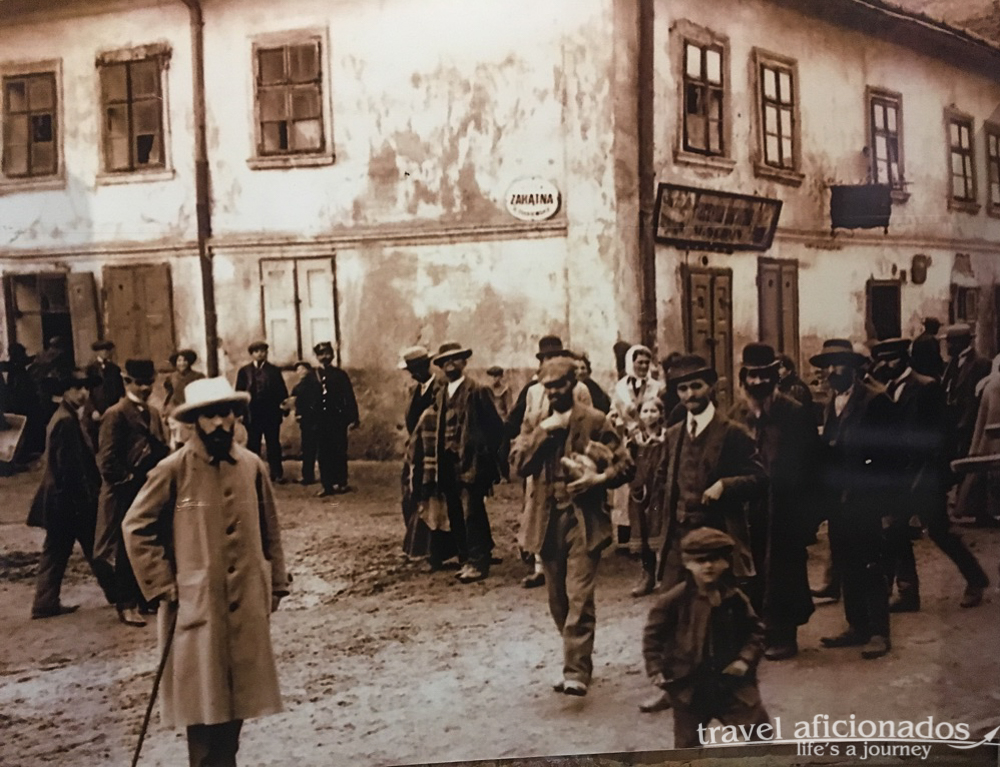
Historic photo of Jewish quarter in Lviv
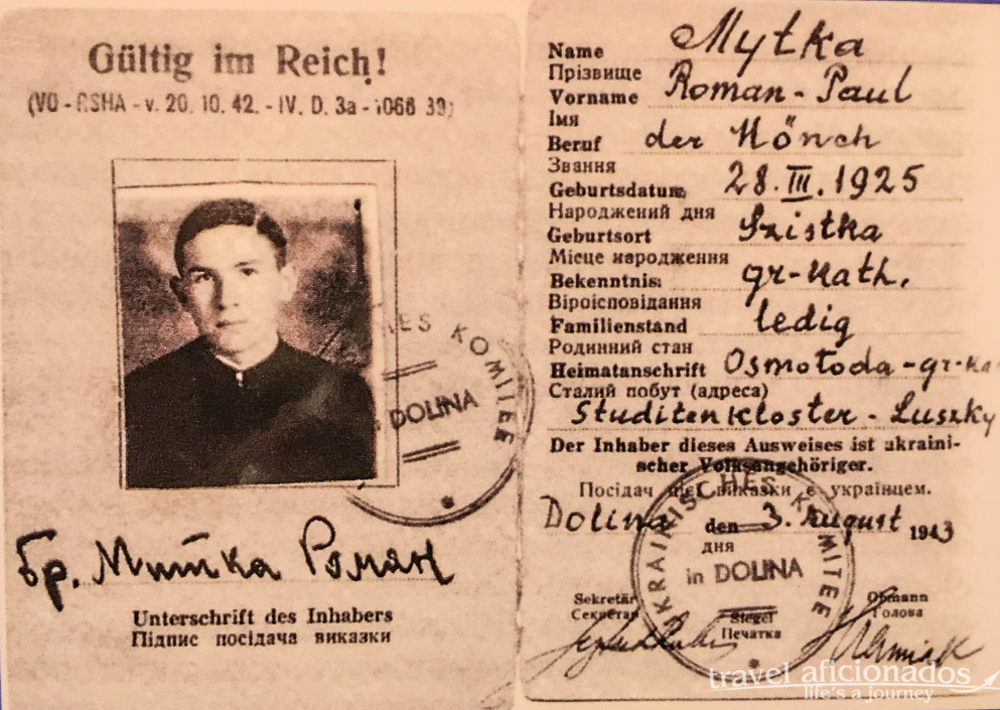
ID displayed in museum
Away from the crowd
Our evenings we spent away from the tourist crowd in the roof-top restaurant of our cozy hotel, overlooking the city. https://taurus-city.com
Another café we regularly hung out at was a café-restaurant frequented by wealthy Ukrainians and young male Turkish tourists / business men. Claudia who speaks Turkish, overheard their telephone conservations with their wives and mothers on the telephone. After they hung up the discussed the prices for prostitutes in Lviv. Our angry looks literally pierced right through them.
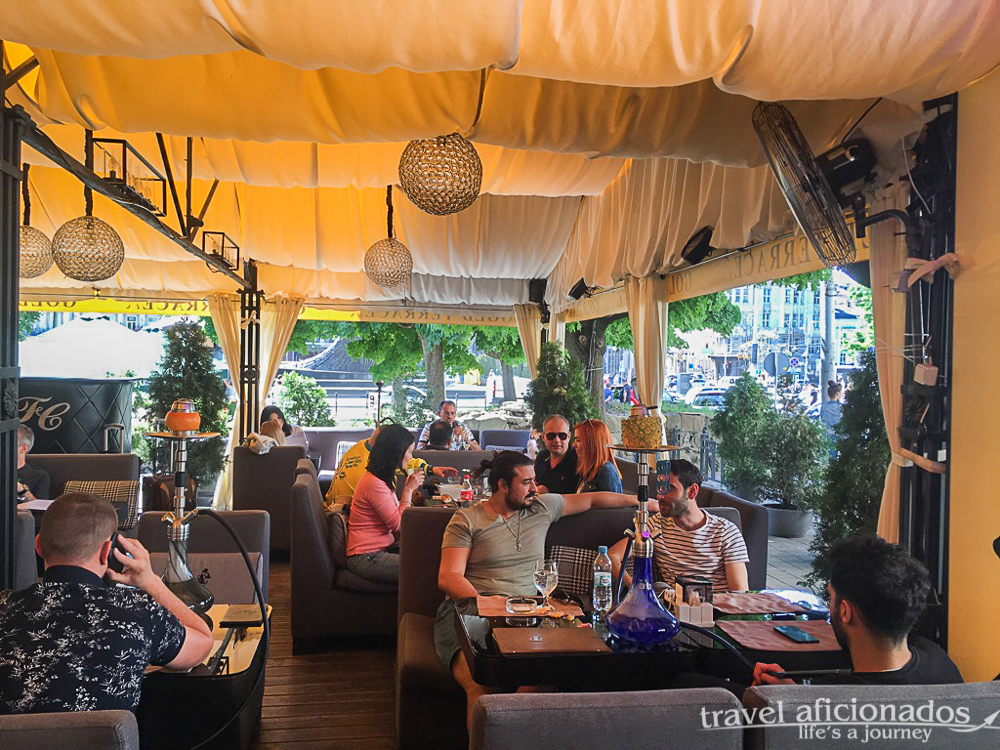
Trendy cafe / restaurant
Next to our hotel was a beauty parlor run by two lovely women. Got a treat head to toe and had a lot of fun talking with hand and feet if those were not being trimmed.
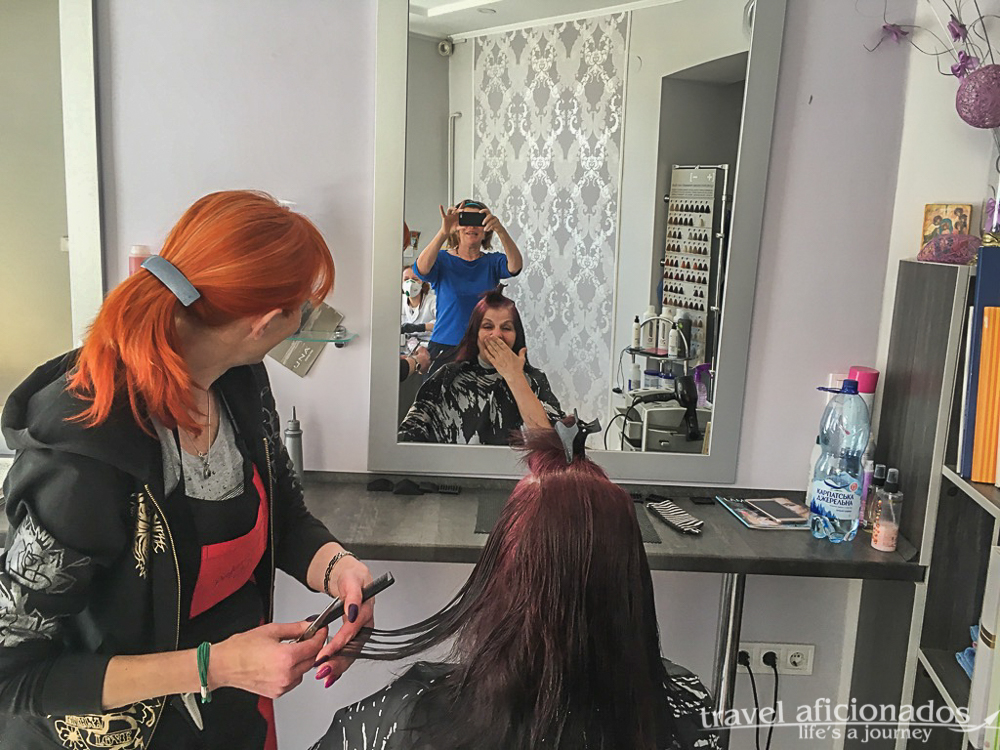
Trip to the beauty parlor
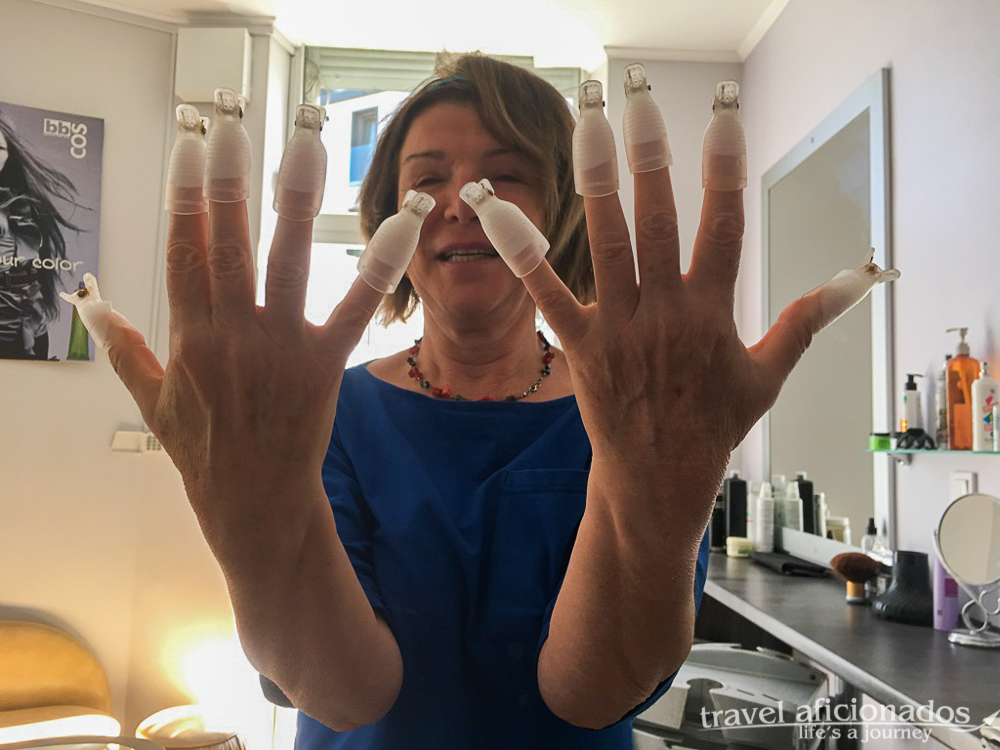
Trip to the beauty parlor
We hardly ever took the street car from out hotel to the city center because we loved strolling the quiet residential street with green trees. The façade of the houses reminded me very much of buildings of the outskirts of Vienna. What was different was the kind of shops in the basement. The people of Lemberg also seem to have a fascination with weeding dresses, you seem them displayed in courtyards on first floor balconies.
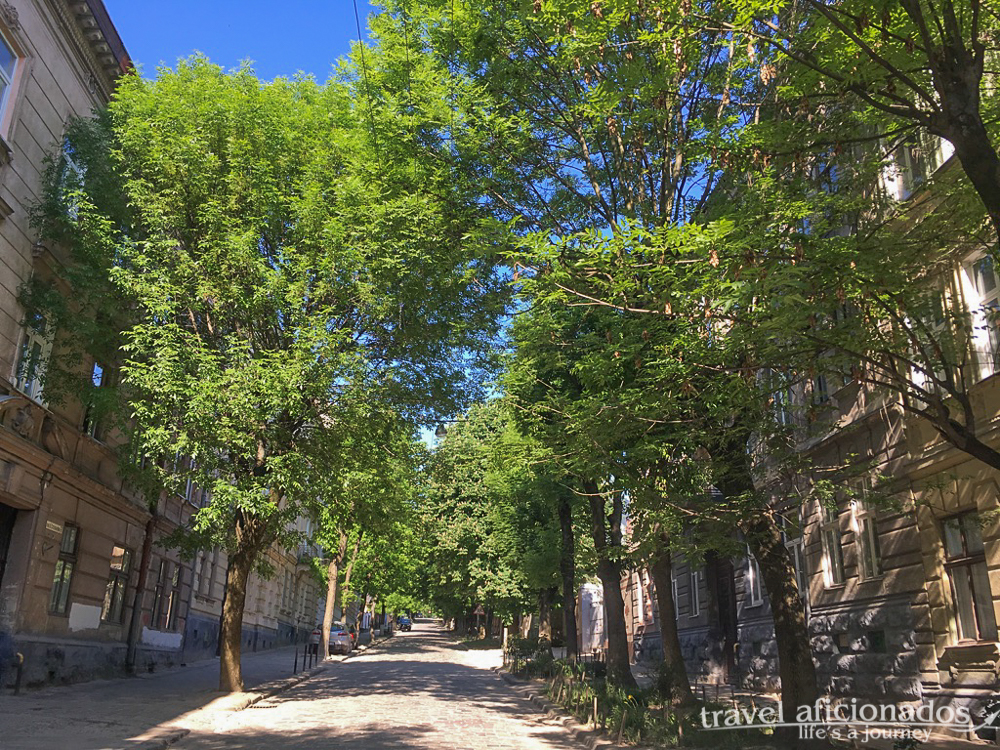
Lviv residential area
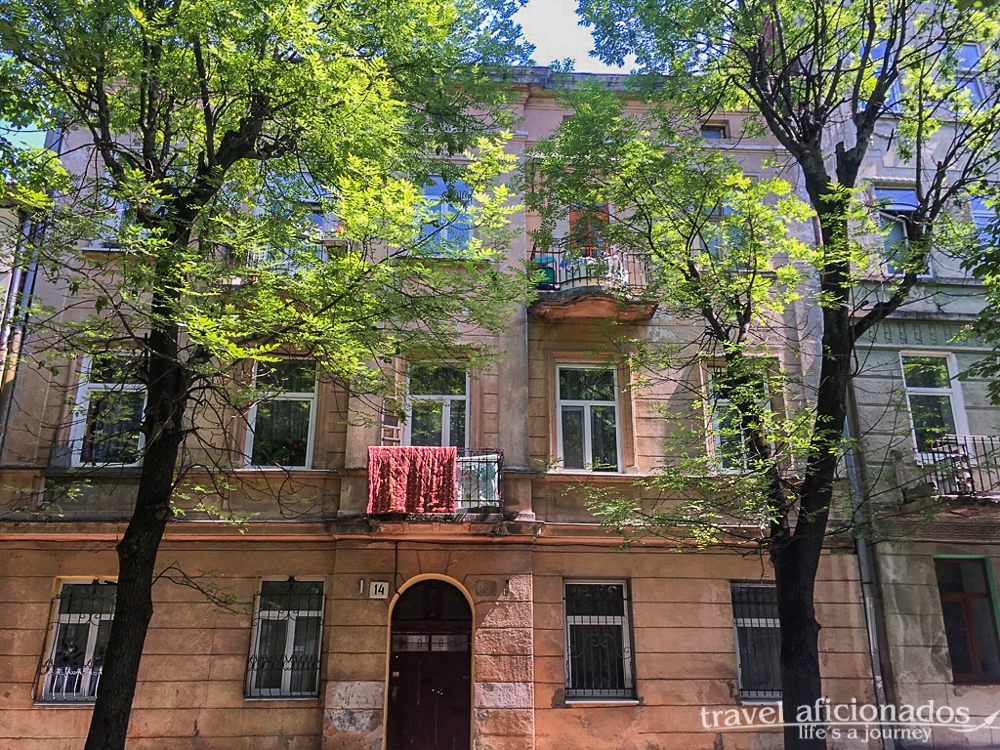
Lviv residential area
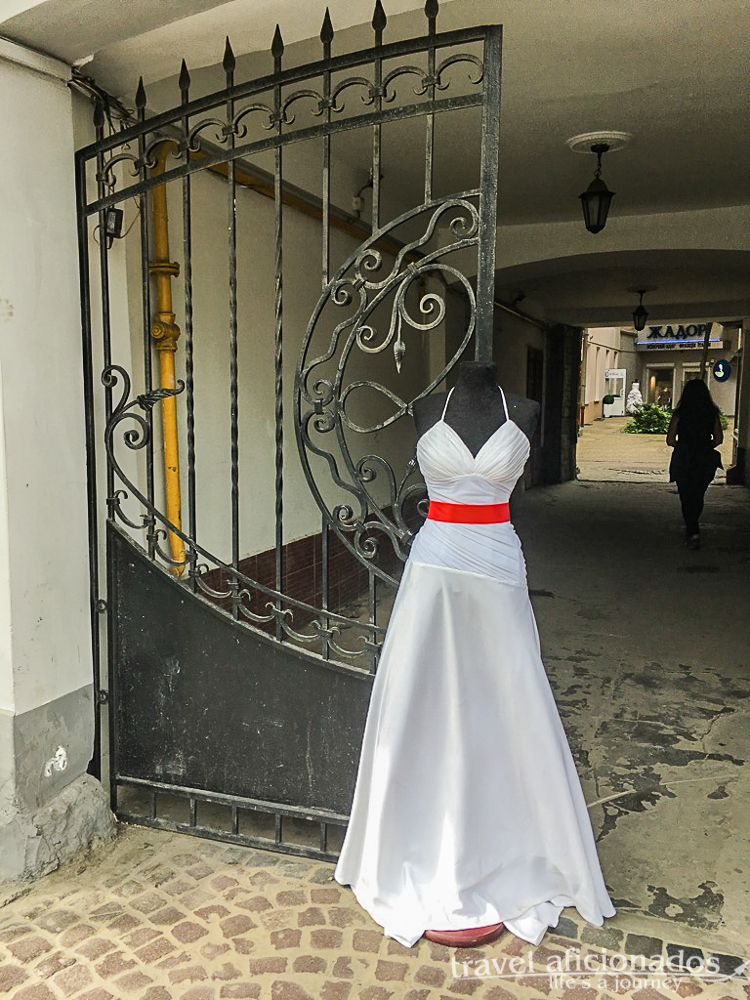
Lvivi has an obsession with wedding dresses
From our hotels we often did not walk towards the center but away from it, on wide cobble-stone streets. The feel soon changed, the way people dressed was the kinds of shops and delipidated houses became more frequent. As well as women selling sitting on sidewalks selling flowers and vegetable, grown in their garden.
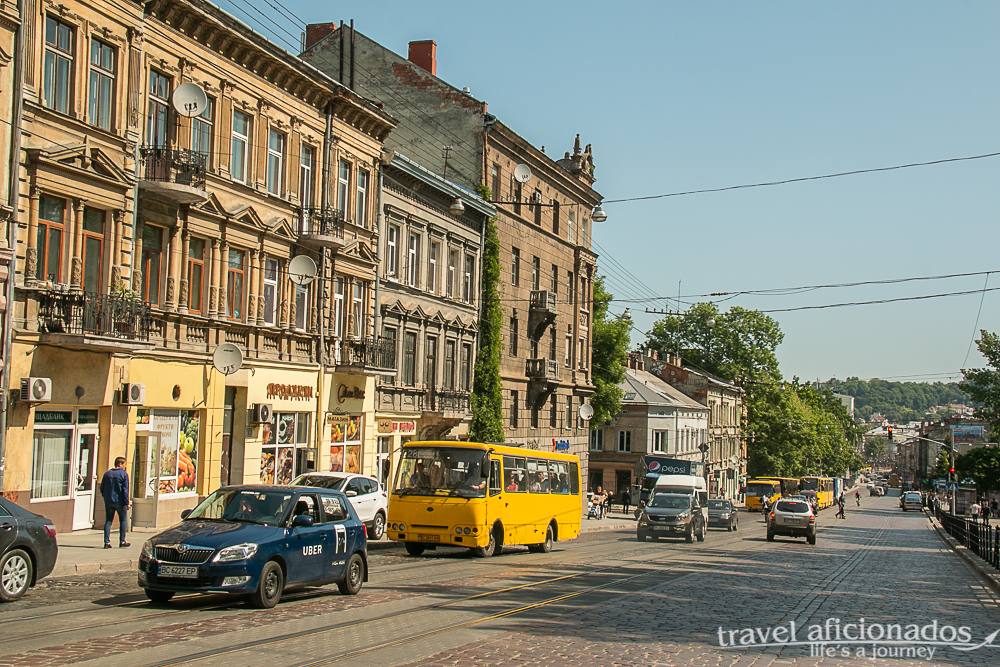
area near our Hotel Taurus
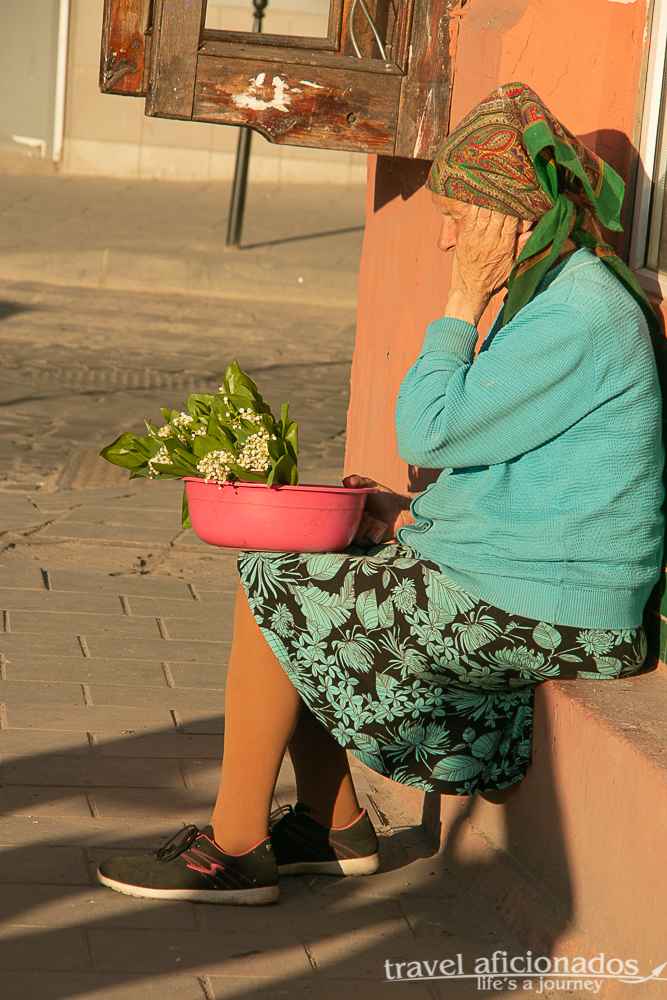
Women selling flowers to make a living
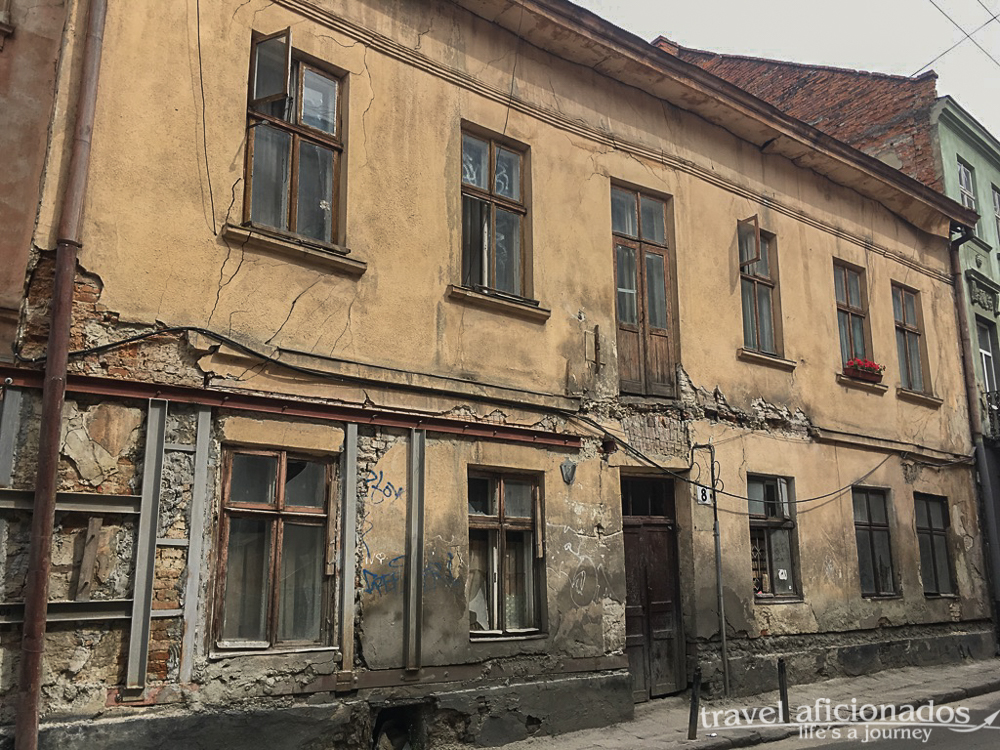
Lviv’s many faces
Lviv is a one-hour flight from Vienna and it certainly was not my last visit.

Austrian Airline serves Lviv – a one-hour flight






































No comments yet.